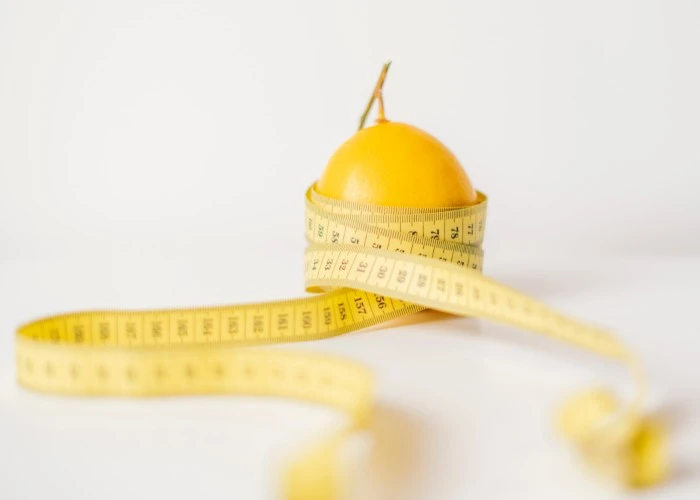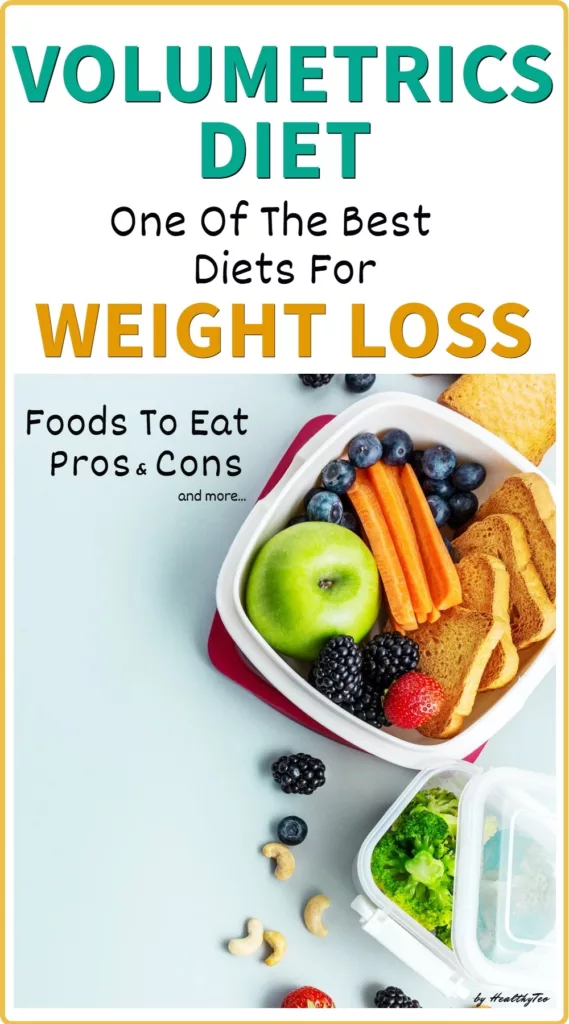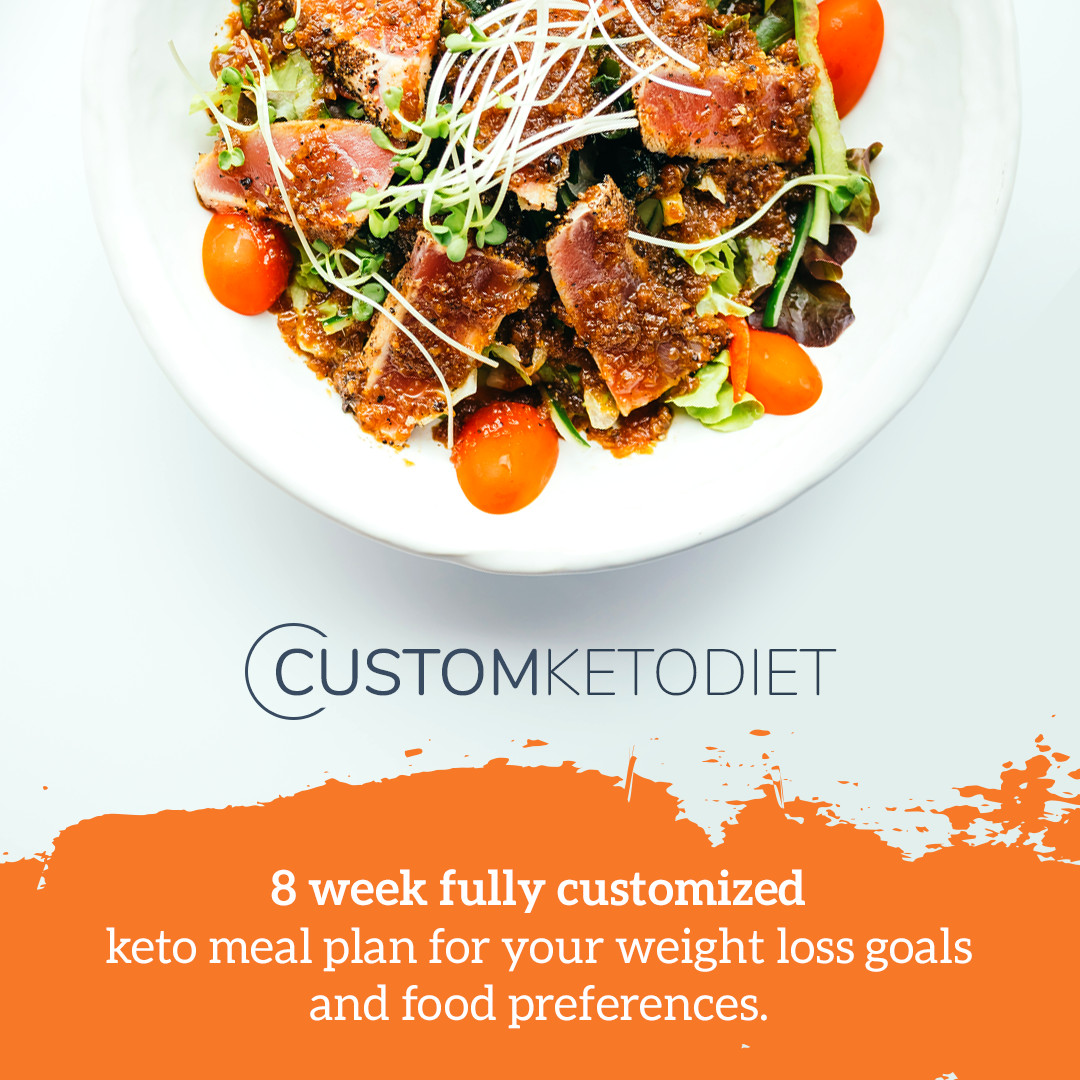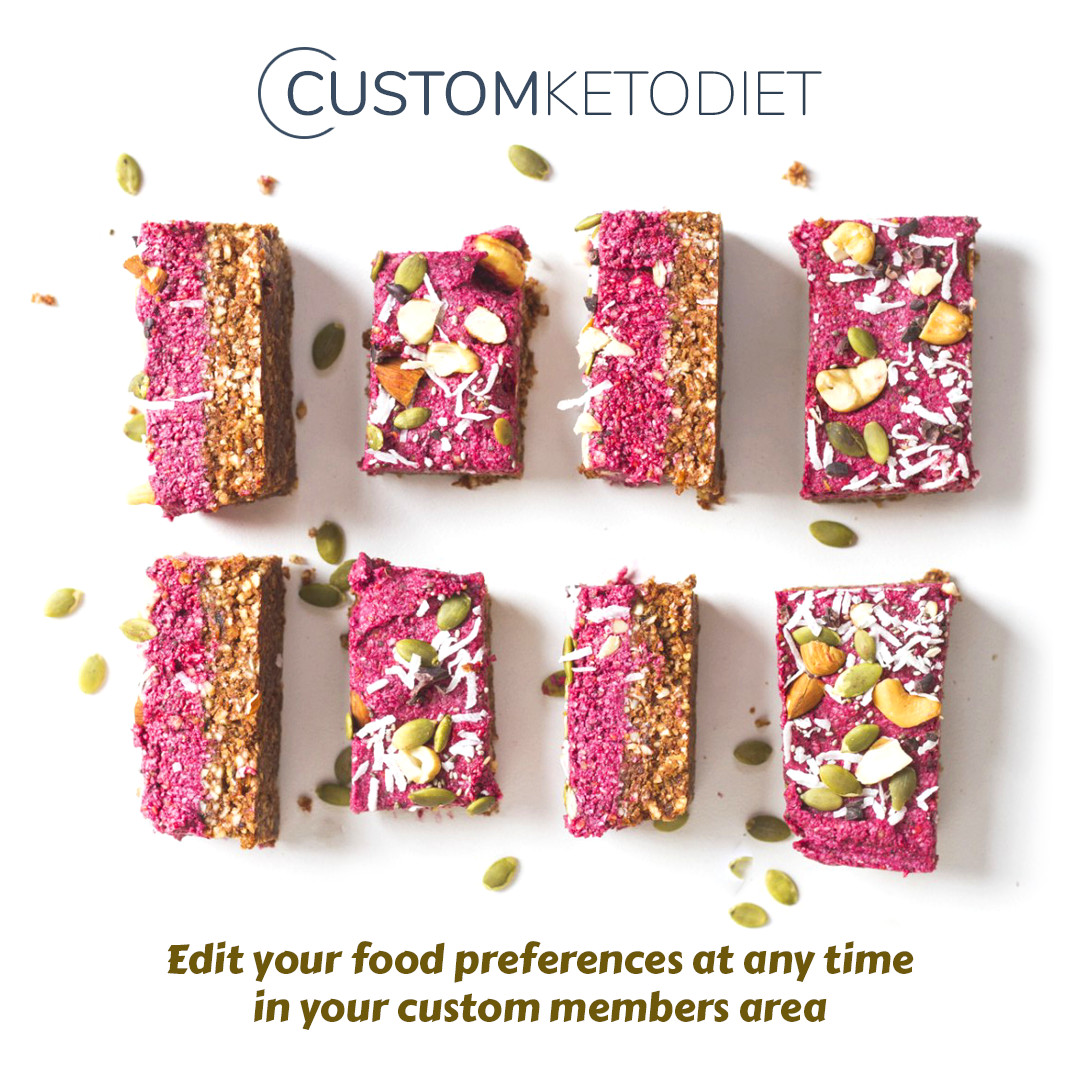Volumetrics eating – Basic breakdown, rules, foods, pros and cons
If your goal is to lose weight and you are tired of all fad diets maybe the Volumetrics Diet might be the right choice for you. On this diet, you will feel full and satisfied after eating and also will help you lose some weight in a long term.
Opposite of all other diets for weight loss this is not a restrictive diet. Instead of consuming less food to shed some pounds on this diet, you eat more.
Volumetrics is centered around a simple way of eating: filling up on fewer calories with foods that are high in nutrients and no food is off-limits.
This article will help you to understand what is the Volumetrics Diet, what foods you can eat, how effective is for weight loss, and what are the pros and cons of following this eating plan.
Sounds great? Let’s see first what is the Volumetrics Diet and how it works?
This post may contain affiliate links, which means we may receive a small commission, at no cost to you, if you make a purchase through a link. For more information, please see our disclosure.
What is the Volumetrics Diet?
The Volumetrics diet is an eating plan that encourages consuming foods that are low in calories but high in water, fiber, and nutrition to help keep you full and satisfied. This diet also encourages other healthy habits, such as regular exercise and keeping a food journal.
Volumetrics plan for weight loss is created by Barbara J. Rolls, Ph.D. a nutrition scientist who has been studying hunger and obesity for more than 20 years. According to U.S News & World Report’s this diet shares third place with the Vegan diet in best weight-loss diets.
In the book Volumetrics: Feel Full on Fewer Calories Dr. Rolls explains how to avoid high-calorie foods, learn how to spot foods that seem healthy but contain hidden calories, and how to find foods that will make you feel satisfied with fewer calories.
According to her research, reducing calories by between 500 and 1000 per day may lead to 1 to 2 pounds of weight loss per week.
In her second book published in 2005 The Volumetrics Eating Plan, you can find recipes, menu planners, and a list of healthy food options for every meal.
Unlike other diets for weight loss, the Volumetrics Diet should be considered as a long-term lifestyle change rather than a short-term solution.
The Volumetrics Diet for weight loss – How it works?
The Volumetrics diet splits up foods into four categories based on their calorie density. Calorie density is a measure of the calorie content of food relative to its weight or volume. Also, it is called energy density and it’s measured as calories per 3.5 ounces (100 grams) of food.
Simply said it is the measure of how many calories are in a given weight of the food. For example, a vegetable with 30 calories per 100 grams has a low-calorie density. While chocolate that has 550 calories per 100 grams has a very high-calorie density.
Choosing foods with low-calorie density makes you automatically eat fewer calories while still eating large and filling portions.
Volumetric diet categories
Category 1: Very low-calorie density of less than 0.6 – fruits and vegetables ( except starchy ones), non-fat milk, and broth-based soup.
Category 2: Low-calorie density of 0.6 – 1.5 – grains, legumes, low-fat meats, starchy fruits, and vegetables.
Category 3: Medium calorie density of 1.6 – 3.9 – foods that are high in fat, carbohydrates, and/or sugar: meat, cheese, bread, full-fat dairy, coke, ice cream, etc.
Category 4: High-calorie density of 4.0 – 9.0 – foods higher in fat, carbs, and sugar than the category three foods. Butter, nuts, oil, crackers, candy, and cookies.
To calculate the calorie density of the food you should divide the number of calories in a particular serving size by its weight in grams. You will end up with a figure between 0 and 9.
Foods from categories 1 and 2 are the most important to include in your meals. You can eat small amounts of foods from category 3 and very limited portions of category 4 foods.
The good thing about this eating style is that no foods are off-limits. You can include foods with a high-calorie density by just modifying your portion size and adjusting your other meals.
Another thing if you decide to follow this diet is that you will need to exercise at least 30-60 minutes every day. Also, you should keep track of your food intake and physical activity in a journal. This will help you to monitor your progress and to recognize areas that may need improvement.
Foods to eat and avoid on the Volumetrics Diet

As we mentioned before the Volumetrics Diet divides foods into four categories based on their calorie density. It focuses on high-volume, low-calorie foods with some higher-calorie whole foods allowed in smaller quantities.
Keep in mind that nothing is truly off-limits with the Volumetric Diet and this plan for weight loss is very flexible in terms of food choices.
Category one foods
In this category belong foods that are very low-calorie density and the diet emphasizes eating a lot of them.
- Non-starchy vegetables: asparagus, broccoli, Brussel sprouts, carrots, tomatoes, zucchini, kale, etc.
- Fruits: pears, peaches, apples, berries, bananas, grapefruit, etc.
- Non-fat dairy: nonfat yogurt and skim milk
- Soups: broth-based soups such as chicken soup, vegetable soup, minestrone and lentil soup.
- Beverages: water, unsweetened tea, coffee.
Category two foods
These are also low energy density foods and you will eat a lot of these foods.
- Starchy vegetables: potatoes, corn squash, parsnips, peas.
- Whole grains: buckwheat, farro, barley, brown rice, quinoa.
- Legumes: lentils, black beans, kidney beans, chickpeas.
- Lean proteins: white fish, lean cuts of beef and pork, skinless poultry.
Category three foods
This category belongs to medium-density foods and should be consumed in moderation. This means you can eat them but in small servings.
- Refined carbs: white rice, white bread, white pasta, and crackers.
- Meat: poultry with the skin, fatty fish and high fat cuts of beef and pork.
- Full fat dairy: ice cream, cheese, full fat yogurt, whole milk.
Category four foods
Foods that are eaten only occasionally. These foods are classified as high-density foods. They contain more carbs, fats, and sugar than the category three foods.
- Seeds: chia seeds, hemp seeds, sesame seeds, and flax seeds.
- Nuts: walnuts, almonds, pecans, macadamia nuts, and pistachios.
- Oil: olive oil, vegetable oil, butter, margarine and lard.
- Processed foods: candies, cookies, chips, pretzels, and fast food.
Foods on the Volumetrics Diet
No foods are off-limits. You should eat mostly foods from categories one and two. Eat-in moderation foods from category 3 and only occasionally foods that belong to category 4.
The author of this diet recommends eating 3 meals and 1-2 snacks per day. Meals recommended in the book are set at 400 calories for breakfast, 500 calories for lunch, 500 calories for dinner, and not set calories for snacks.
The diet’s standard meal plan provides around 1,400 calories per day but it can be adjusted to fit your calorie goals by adding extra snacks or increasing portion size.
According to its author, the purpose of this diet is not to count calories but instead to learn what your meals should look like at that calorie level.
The book also includes formulas that can help you to calculate how many calories you need a day and also includes meal plans for 1600 calories and 2000 calories per day.
Here is a full list of high-volume low-calorie foods that you can add to your healthy diet!
Sample Volumetrics Diet menu for one day
- Breakfast:
- Oatmeal topped with cinnamon, apple slices and a sprinkle of brown sugar.
- 1/2 grapefruit
- Non-fat milk
- Coffee
- Lunch:
- Grilled chicken salad with roman letuce, red bell peppers, blue cheese and and walnuts with light dressing
- Whole-wheat bread
- Strawberries
- Dinner:
- Steak fajita with griled green peppers, onions, salsa, letuce, fresh tomato, corn kernels, and non fat sour cream on a tortila
- Cantaloupe
- Snack:
- Fresh blueberries and cheerios with skim milk
This one-day menu shows that there are many foods that you can include in your daily meals. You just need to watch for their calorie density and to consume more foods from categories 1 and 2 and less or in moderation from category 3 and especially little from category 4 Volumetrics Diet foods.
You can find more recipes and how to prepare your meals in the second book from the author and order it from Amazon here: The Volumetrics Eating Plan book.
Can you lose weight on the Volumetrics Diet?

Following the Volumetrics Diet will likely result in weight loss. By selecting foods with a low-calorie density you can eat large servings without significantly increasing calorie intake.
Furthermore, choosing foods with a low-calorie density may also help curb cravings and reduce appetite, which could result in weight loss.
There are several reviews and meta-analyses of observational studies that confirmed that low-energy diets are associated with lower body weights.
A systematic review of the literature on the relationship between food energy density and body weight changes in obese adults was published in 2016. This review of 13 studies in 3,628 people tied foods with a lower calorie density to increased weight loss.
Another clinical trial published in the American Journal of Clinical Nutrition in 39 women found that participants ate 56% more calories when served a large portion of a high-calorie density meal, compared with a smaller low-calorie density meal.
Furthermore, a study in 96 women with excess weight and obesity published in the Journal of Nutrition found that meals with a lower calorie density led to increased feelings of fulness, decreased cravings, and reduced hunger.
These and other studies support the claim that the Volumetrics Diet is effective for weight loss. Not just the low-calorie density foods, but also exercise is an important part of this diet.
The Volumetrics diet encourages exercising for about 30-60 minutes per day and combined with low-calorie density foods which are proven to help you lose weight because you eat more food but consume fewer calories. So, this is a perfect combination for achieving your weight loss goals.
Summary: Volumetrics Diet and Weight Loss
The Volumetrics Diet may help you lose 1-2 lbs per week by eating foods with low-calorie density and regular exercise at least 30 minutes per day.
Pros and Cons
Pros
- Nutritionally well- balanced
- Limits processed foods
- Effective
- Includes exercise
Nutrition
The Volumetrics plan is balanced and will allow you to get all the nutrients you need from food. By eating healthy foods that are low in calories but rich in fiber, vitamins, and minerals the Volumetrics Diet will help you to increase your intake of the main nutrients and protect against nutritional deficiencies.
Effective and sustainable
It is safe and evidence-based. This diet provides education on energy density and doesn’t encourage unsustainable eating habits of excessive exercise.
Unlike most diets for weight loss, the Volumetrics Diet should be viewed as a long-term lifestyle change. Encouraging you to eat more healthy food, and prioritizing foods with lower calorie density like fruits and vegetables will help you to make healthier dietary decisions.
Research by Rolls and other studies shows that eating this way can help people lose weight. Additionally, no foods are banned on this diet. Because no foods are banned this is also a sustainable eating pattern that can be continued indefinitely.
Limits processed foods
Despite the fact that the Volumetrics Diet doesn’t completely ban any foods, most processed foods are high-calorie density and should be restricted as part of the plan. Even if you are not following a diet to lose weight you should avoid processed foods.
There is much evidence that connects processed foods with different diseases because they are typically high in sodium, sugar, fat, and calories.
Includes exercise
The big plus of this plan is that encourages regular, moderate physical activity. Many diets focus on the food that you should eat and when to eat, but ignore physical activity which is a vital part of a lifestyle that leads to long-term and permanent weight loss.
Cons
- Can be time-consuming
- Limits healthy fats
Time-consuming with a little online support
When you first start following the Volumetrics Diet you will need time to analyze your food choices for density, keep track of what you are eating and prepare food. In addition to these, you are supposed to prepare most of your meals and snacks at home.
Although some recipes and resources for this diet are available online, to completely follow this diet you will need to purchase the book from Dr. Rolls to calculate your meals calorie density and track your meals.
Limits healthy fats
Nuts, seeds, and oils are foods that are rich in healthy fats but are restricted on this diet. You can consume them but in small amounts. These foods are important because they provide polyunsaturated and monounsaturated fats which are very important for our overall health.
Opposite of this, many other diet plans encourage you to eat these foods such as one of the most used diets the Mediterranean Diet where a special accent is put on olive oil.
How do I get started?
First, you’ll want to check out Dr. Roll’s book The Ultimate Volumetrics Diet. Then you’ll need to plan out your meals. Planning out your meals for the week ahead of time will be crucial to your success.
Try to find some great soup recipes. Broth-based soups are very low in energy density and if you eat them before a meal they can help you eat less.
Bulk cook your favorite lean protein ( white fish, chicken breast, turkey breast). This will make preparing meals easier throughout the week.
You can double the vegetables, legumes, or beans in your meals to boost the fiber content and reduce the energy density of the meal.
For breakfast add fruits to your cereals for a touch of sweetness without the added sugars!
Don’t forget that this diet plan encourages more movement throughout the day. You don’t need to start with a rigorous exercise program it is enough to increase the number of steps you take per day with the end goal of reaching 10,000 steps.
Does Volumetrics Diet have any health risks and who can follow?
There are no known risks or side effects associated with this eating pattern. However, it is always good to check in with your doctor or nutritionist before undertaking a weight loss program to make sure it is safe for you to do so.
Anyone can follow the Volumetrics Diet.
If you are a vegetarian or vegan the bulk of what you will be eating – fruits, vegetables, whole grains are staples of both vegan and vegetarian diets.
People who can’t tolerate gluten can easily adapt Volumetrics to fit their needs. Also, you have the freedom to use only kosher ingredients.
Final thoughts – Should you try the Volumetrics approach for weight loss?
If you decide to follow the Volumetrics Diet you will increase your intake of nutrient-dense foods like fruits and vegetables. This diet is based on consuming foods with a low-calorie density and high volume.
When the caloric guidelines and food recommendations are followed correctly this diet may lead to a safe gradual weight loss. Except for the fact that you will consume just small amounts of nuts and seed ( rich in omega-3 fatty acids), there is no big difference between this diet and healthy eating principles.
While reducing fat and calorie intake is an effective way to lose weight it might mean that followers miss out on the important benefits associated with healthy sources of fat, found in foods like seeds, nuts, and olive oil. These foods are not banned on the Volumetrics Diet but you can consume them in small amounts.
Finally, every diet is not for everyone. These facts presented here about the Volumetrics Diet should just inform you about how it works and what can you expect from this way of eating.
Every person has their own nutritional needs, genetic blueprint, goals, and budget.
If your goal is weight loss, remember that losing weight is not just associated with the food that you consume. Exercise, sleep, and other lifestyle changes are also important.
Remember, before you make any changes to your eating habits no matter what your goal is, whether it’s weight loss or better health always consult with your doctor or nutritionist. They will show you what is best for you and what changes should you make!





